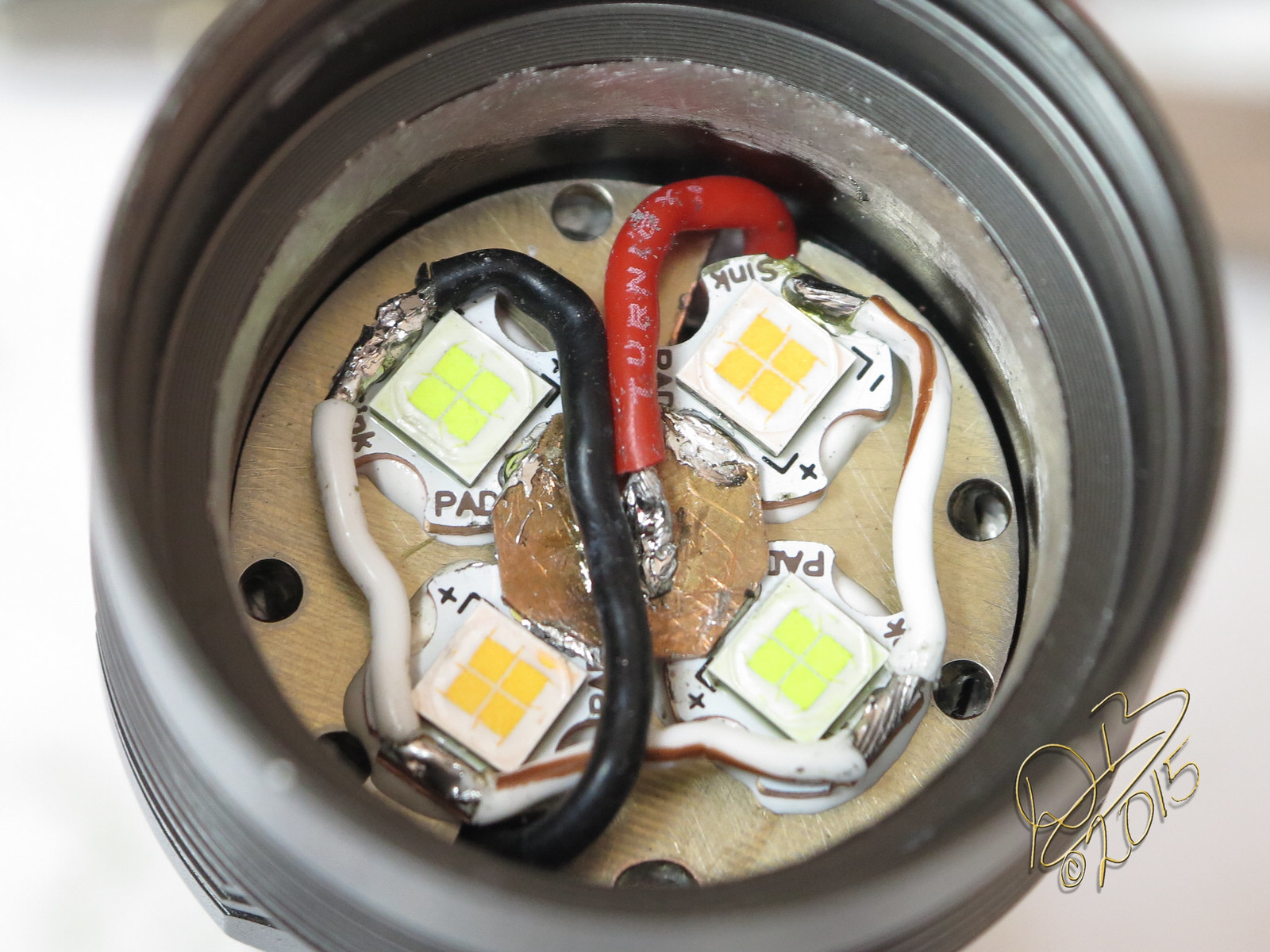I got my D80 today, I plopped a battery into it and turned it on. It didn’t work. I did the usual paperclip test, and got some light, so that narrowed the problem down to the tail cap. While I was visually inspecting the tailcap the entire contents of the tailcap fell out into my hand. I figured the retaining ring must not have been screwed in properly. While the tailcap was disassembled I took the oppertunity to clean off all contact points in there using isopropyl alcohol, lube the threads, and put it back together, screwing in the retaining ring properly this time.
I screwed on the tailcap on the body, turned it on, and the flashlight worked. However as I was screwing on the tailcap I heard a popping sound. When I unscrewed it again the retaining ring had came off it’s thread and the tailcap components fell out again. I’ve repeated this process twice more. It only happens when screwing it on with a battery inside. It appears that when I screw the tailcap on the pressure from the battery somehow manages to push the retaining ring loose. I’m not using excessive force when screwing it on. I was using a protected battery, 68mm long. I ordered some unprotected 30Qs around the same time that haven’t arrived yet, so hopefully when I get a shorter one the pressure will be less and the problem will be gone.
But still, what should I do about this? Just live with it and hope the shorter battery works? Try to get a new tailcap from gearbest? If the later, how would I go about doing that?


